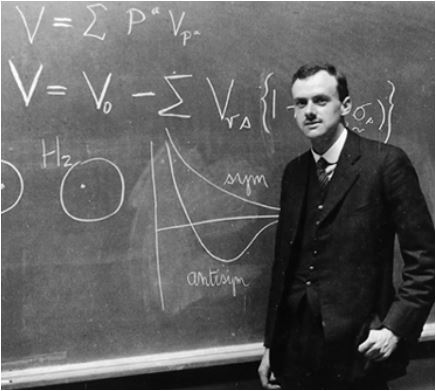Why was Paul Dirac Awarded the Noble Prize for Physics in 1933?
Paul Dirac: Nobel Laureate and Pioneer of Quantum Mechanics (1933)
Paul Dirac, an English physicist, made groundbreaking contributions to the field of quantum mechanics during the early 20th century. Renowned for his fundamental discoveries and mathematical formulations, Dirac played a pivotal role in revolutionizing our understanding of the quantum world. In recognition of his exceptional research, he was awarded the Nobel Prize for Physics in 1933. This article explores the reasons behind Dirac’s prestigious honor and highlights his remarkable scientific breakthroughs.

Discovery of the Dirac Equation:
Paul Dirac’s Nobel Prize was primarily awarded for his formulation of the Dirac equation, which describes the behavior of relativistic quantum particles, particularly electrons. In 1928, Dirac introduced a mathematical framework that incorporated both quantum mechanics and Albert Einstein’s theory of special relativity.
The Dirac equation successfully unified quantum mechanics and relativity, providing a description of electrons that accounted for their wave-particle duality and relativistic effects. It predicted the existence of antiparticles, such as the positron, which was later experimentally confirmed. The Dirac equation marked a significant advance in our understanding of elementary particles and their interactions.
Contributions to Quantum Electrodynamics:
Dirac’s work also made significant contributions to the development of quantum electrodynamics (QED), the theory of the electromagnetic interaction between charged particles. He formulated a consistent and mathematically elegant version of QED, which provided a theoretical framework for calculating and predicting the behavior of photons and charged particles.
Dirac’s quantum electrodynamics formed the basis for subsequent advancements in the field, paving the way for the development of modern quantum field theory. His work contributed to the understanding of particle interactions, quantum vacuum fluctuations, and the renormalization techniques used to address divergent calculations in QED.
Impact on Physics and Subsequent Research:
Paul Dirac’s contributions had a profound impact on the field of physics. His formulation of the Dirac equation and quantum electrodynamics provided a theoretical framework for understanding the behavior of fundamental particles and their interactions.
Dirac’s work laid the foundation for subsequent developments in particle physics, quantum field theory, and the Standard Model. His mathematical formulations continue to be widely used in theoretical physics and have influenced diverse areas, including quantum chromodynamics and the unification of fundamental forces.
Recognition and Legacy:
Paul Dirac’s Nobel Prize for Physics in 1933 celebrated his exceptional scientific achievements and the transformative impact of his work on quantum mechanics and quantum electrodynamics. His formulations revolutionized our understanding of elementary particles and their behavior, providing crucial theoretical frameworks that underpin modern physics.
Dirac’s legacy continues to inspire scientists, shaping the field of theoretical physics and serving as a guiding light for new discoveries. His work exemplifies the power of mathematical elegance and theoretical insights in advancing our understanding of the natural world.
Conclusion:
Paul Dirac’s Nobel Prize for Physics in 1933 celebrated his groundbreaking contributions to quantum mechanics and quantum electrodynamics. His formulation of the Dirac equation provided a unified description of quantum particles, accounting for their wave-particle duality and relativistic effects. Dirac’s work continues to shape the field of theoretical physics and serves as a testament to the power of mathematical formalism and theoretical insights in unraveling the mysteries of the quantum world.




